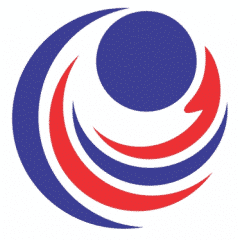Repetitive Strain Injury: Risk factors, Diagnosis, and Treatment
A repetitive strain injury is a painful condition that is caused due to repetitive movements of a joint, mainly affecting muscles, tendons, and nerves. It is a musculoskeletal condition, mainly occupational in origin. This condition mainly affects the extremities, but there are cases showing that this condition also affects the spine, which sometimes causes referred pain in upper extremities, causing difficulties to diagnose this condition.
The pain associated with this disorder is very severe that carrying out daily activities becomes very difficult.
Types of repetitive strain injury:
There are two types of repetitive strain injury:
- Type 1: This type of repetitive strain injury is musculoskeletal, with swelling and inflammation of specific tendons and muscles.
- Types 2: This type of repetitive strain injury is caused due to nerve damage caused due to the activities of joints at work.
It is also known as non-specific pain syndrome
Symptoms:
The disease progresses from mild to very severe. The symptoms are the following:
- Pain and tenderness of joints
- Stiffness of joints.
- Throbbing sensation
- Tingling and numbness in the affected areas.
- Weakness of joints
- Loss of sensation
- Loss of strength in the affected joints.
- Tennis elbow
- Golfer’s elbow
- Rotator cuff
- A painful spot in the groove of where the arm meets the shoulders.
- Swelling, redness, and warmth at the bottom of the kneecap.
- Redness, swelling, and warmth at the elbows.
In the early stages, the symptoms only appear when the overused joints are being abused. As the disease progresses there is swelling in the joints with constant pain.
Causes:
The causes of repetitive strain injury are the following:
- Repetitive use of joints
- Doing high-intensity activities for a long time without any break.
- Poor posture, sitting in an incorrect manner for long.
- Exposure to cold temperatures for long.
- Using equipment that vibrates.
- Trauma
- Crystal deposit as seen in cases of gout.
- Friction
- Systemic diseases as in rheumatoid arthritis
- Carpal tunnel syndrome
Risk factors:
The following factors increase the risk of developing repetitive strain injury are:
- Overuse of joints
- Overuse a group of muscles
- Exposure to vibrating instruments for long.
- Exposure to cold for long periods.
- Bad posture the same posture
- Doing work in the same posture for a long time.
- Forceful activities
- Direct pressure
- Fatigue
- Increased stress levels.
- Males are slightly at higher risk.
- People suffering from systemic diseases like rheumatoid arthritis or gout.
Self-care:
- Get adequate rest
- Avoid using the affected joints or muscles
- Use bands around knees, elbows, and wrist if they are affected.
- Start to exercise as advised by the doctor once the symptoms start to get better.
- Use ice packs at affected places.
- Avoid activities that tend to flare up symptoms.
- Use splints or bands to decrease strain in affected areas.
When to see a doctor?
- When pain in joints is accompanied by fever, nausea, chills or vomiting.
- More than one joint involved.
- Migrating pains
- Inability to sleep on the affected side.
- Redness and warmth over the joints.
- Pain in the movement of arms and legs.
